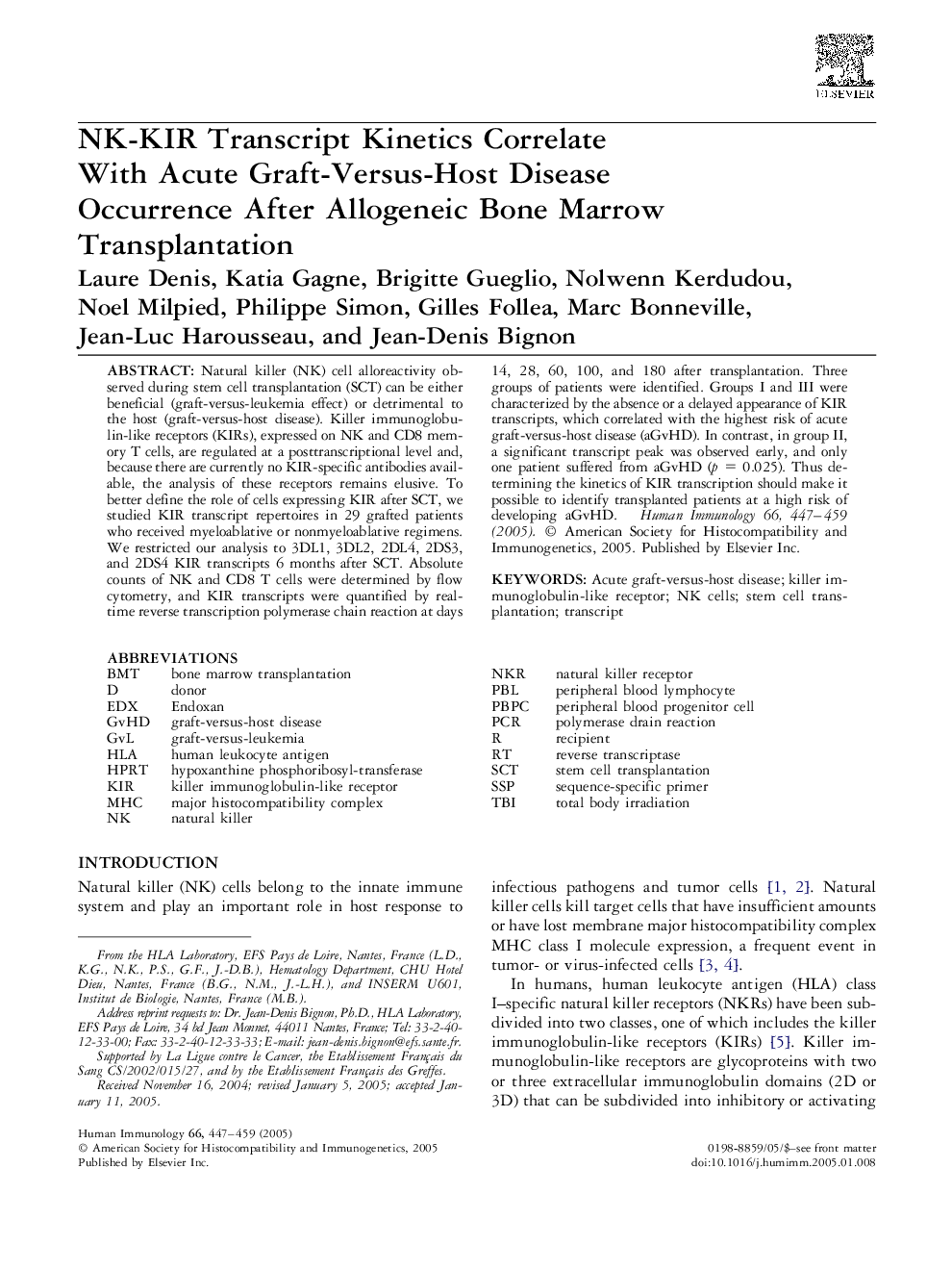| Article ID | Journal | Published Year | Pages | File Type |
|---|---|---|---|---|
| 9264186 | Human Immunology | 2005 | 13 Pages |
Abstract
Natural killer (NK) cell alloreactivity observed during stem cell transplantation (SCT) can be either beneficial (graft-versus-leukemia effect) or detrimental to the host (graft-versus-host disease). Killer immunoglobulin-like receptors (KIRs), expressed on NK and CD8 memory T cells, are regulated at a posttranscriptional level and, because there are currently no KIR-specific antibodies available, the analysis of these receptors remains elusive. To better define the role of cells expressing KIR after SCT, we studied KIR transcript repertoires in 29 grafted patients who received myeloablative or nonmyeloablative regimens. We restricted our analysis to 3DL1, 3DL2, 2DL4, 2DS3, and 2DS4 KIR transcripts 6 months after SCT. Absolute counts of NK and CD8 T cells were determined by flow cytometry, and KIR transcripts were quantified by real-time reverse transcription polymerase chain reaction at days 14, 28, 60, 100, and 180 after transplantation. Three groups of patients were identified. Groups I and III were characterized by the absence or a delayed appearance of KIR transcripts, which correlated with the highest risk of acute graft-versus-host disease (aGvHD). In contrast, in group II, a significant transcript peak was observed early, and only one patient suffered from aGvHD (p = 0.025). Thus determining the kinetics of KIR transcription should make it possible to identify transplanted patients at a high risk of developing aGvHD.
Keywords
Related Topics
Life Sciences
Immunology and Microbiology
Immunology
Authors
Laure Denis, Katia Gagne, Brigitte Gueglio, Nolwenn Kerdudou, Noel Milpied, Philippe Simon, Gilles Follea, Marc Bonneville, Jean-Luc Harousseau, Jean-Denis Bignon,
